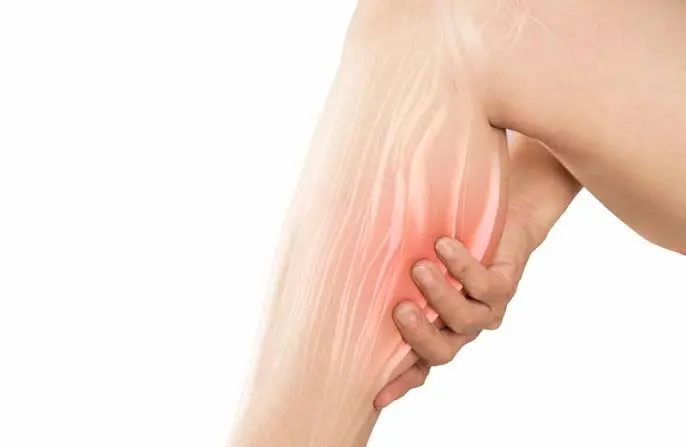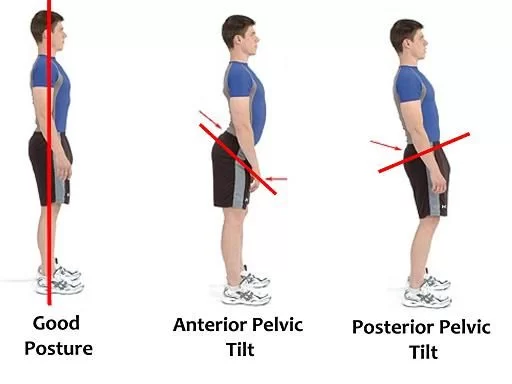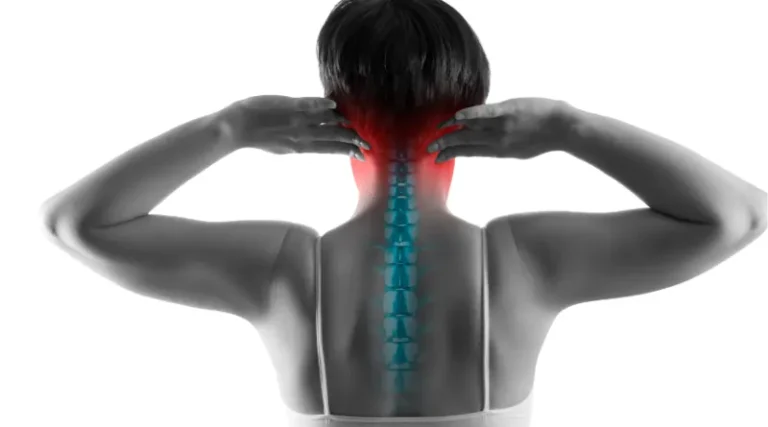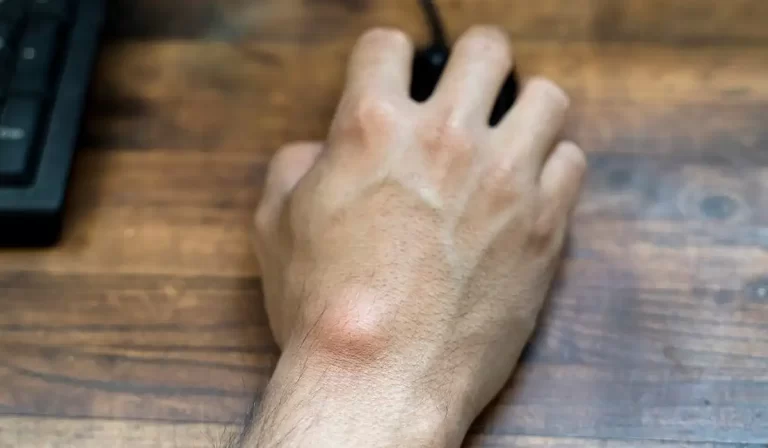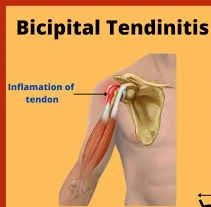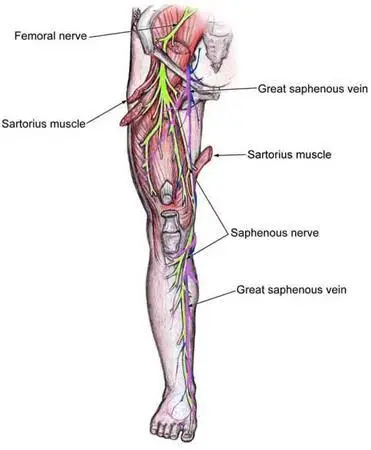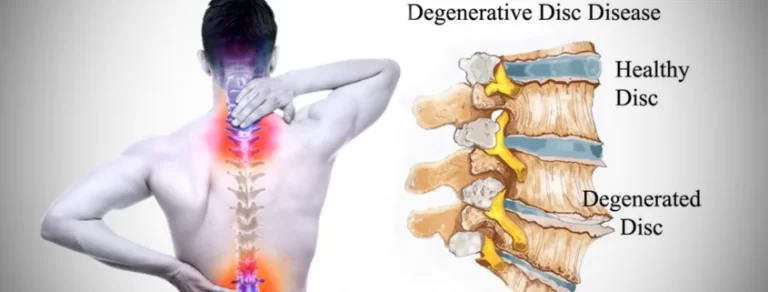Calf Muscle Spasm
Table of Contents
What is a Calf Muscle Spasm?
- Calf muscle spasms are the most prevalent type and are frequently caused by excessive strain, muscle exhaustion, electrolyte imbalances, and dehydration. The calf spasm is painful, comes on suddenly, and usually passes quickly.
- The muscle can be gently stretched to relieve it. Anyone can experience muscular spasms at any time. Calf Muscle spasms can happen to anyone, regardless of age, activity level, or sedentary lifestyle. It can occur when you sit, walk, exercise, or even fall asleep.
Facts about Muscle Spasm
- The body’s various muscle types can be affected by spasms, which can result in a wide range of symptoms.
- Skeletal muscle spasms are the most prevalent type and are frequently caused by excessive strain, muscle exhaustion, electrolyte imbalances, and dehydration. The spasm is painful, comes on suddenly, and usually passes quickly. The muscle can be gently stretched to relieve it.
- The intensity of muscle spasms can vary from slight twitches to excruciating pain. The spasm muscle may seem noticeably distorted or feel harder to the touch than usual. It might feel like over twitching.
- Muscle spasms should be treated medically to rule out other potential underlying causes if they are extremely painful, they do not go away.
- Smooth muscles located inside the walls of hollow organs, such as the colon, have the potential to spasm and cause excruciating pain. This pain is frequently colicky, meaning it comes and goes. Menstrual cramp pain is one example of such pain.
- Dystonia is a particular type of muscle spasm in which there may be a problem with the chemicals in the brain that aid in signal transmission. Blepharospasm and torticollis are two examples.
- Botox injections to paralyze the affected muscle and stop the spasm may be used as part of the treatment, along with medications to help return neurotransmitter levels to normal.
Anatomy of the calf muscle
- The gastrocnemius and soleus are the two muscles that make up the calf muscle. The Achilles tendon, which is immediately linked to the heel, is where these two muscles meet.
- Every leg and foot movement activates these muscles. At the back side of the lower leg, just beneath the skin, is the gastrocnemius muscle.
- Due to its proximity to the skin’s surface, the gastrocnemius muscle is frequently observed for its contour. The main component of the calf muscle is this muscle. Slightly deeper than the gastrocnemius muscle, the soleus muscle is a broad, flat muscle. This muscle attaches to the Achilles tendon above the heel, starting slightly below the knee joints and extending down the lower thigh.
- The Soleus muscle is injured more easily Because this muscle only passes to the ankle joint, muscle injuries are less likely.
Causes of the Calf Muscle Spasm
- Rarely is this condition caused by the muscle itself. Low-level muscle contraction typically results from an underlying cause of muscle pain. This causes the muscle to become extremely painful because it never gets a chance to relax.
- This may be caused by bad posture, psychological stress, excessive sitting, or any number of neck ailments, including instability or inflammatory processes at a low level. Myofascial pain syndrome can occasionally occur in patients who overuse their neck muscles while breathing normally. electrolyte deficiency (salts and minerals in your body, such as potassium, magnesium, and calcium).
- Over-exercise -excessive high-intensity exercise can also result in spasms in the muscles.
Risk factors of the calf muscle spasm
The following variables may make you more susceptible to muscle cramps:
- Age: As you age, your muscle mass decreases, making it easier for the remaining muscles to become overstressed and potentially raising the risk of muscular spasms.
- Dehydration: Muscle cramps are a common occurrence for athletes who exhaust themselves and lose fluids while playing warm-weather sports.
- Pregnancy: During pregnancy, muscle cramps are also often experienced.
- Medical conditions: Diabetes, nerve, liver, or thyroid disorders may increase your risk of muscle cramps.
Signs and Symptoms of the Calf Muscle Spasm
Spasms in the muscles can be minor or severe. In mild cases, you may feel as though your muscle is moving independently. At times, you may even notice twitches in your muscles. In severe cases, you may experience what feels like a tight ball of muscle. (Leg cramps are a common cause of this.) You may experience pain in that area for a day or two after a particularly painful cramp.
While they usually don’t hurt, muscle spasms can occasionally hurt. The muscle may seem to be jumping or moving on its own, and this sensation usually lasts for a short while. It may even be visible to some to watch the twitching of the muscles.
This effect can be very painful and typically affects the legs. The spasm sensation passes, even though it usually goes in minutes. If a neurological disorder is the cause of your muscle spasms, you might also experience the following symptoms:
- Muscle Aches
- Muscle Weakness
- Immobility
- Paraesthesia
- Incoordination
- Inability to sleep
When to visit a doctor?
- The muscles in the posterior side of the leg are enlarged.
- The patient’s leg is numb or tingling.
- The patient’s leg is not enough strong and has some weakness.
- The patient’s calf muscle is heated, sore, and red.
- The patient is experiencing difficulty in breathing.
- Pain occurs in the calf muscle both during and after walking.
- If the patient has uncomfortable varicose veins.
- If a patient has recently been sitting for an extended period, such as during a flight, medical treatment should be sought immediately.
Other indications that the patient has calf pain and needs emergency care include
- If the patient has a fever that is higher than 100°F
- When the patient feels pale or cool to the touch, and they have a swollen leg.
- When a patient experiences severe swelling in their legs
Diagnosis
Most people can self-diagnose after experiencing a skeletal muscle spasm due to overexertion, particularly in a warm environment. It is reasonable to see a health care provider for assessment if the spasms are severe, persistent, or keep happening.
Your physician may inquire about the following in addition to going over your medical history and current prescriptions:
- To what extent is your pain?
- When do you typically experience muscle spasms?
- What is the duration of your cramps?
- How do you feel when you have muscle spasms?
- When did the spasms in your muscles begin?
Differential Diagnosis
- A physician performs a physical examination to decide whether the patient’s primary issue is a pulled or strained muscle.
- Should the physician determine that the patient’s problem is more serious, the musculoskeletal ultrasound scan will be examined.
The following can be determined by ultrasound:
- Diabetic neuropathy
- Deep vein thrombosis
- Intermittent Claudication
- Plantar fasciitis
For guidance, musculoskeletal ultrasonography is offered.
Treatment of the calf muscle spasm
Medical treatment of the calf muscle spasm
- Usually, muscle spasms go away on their own. Treatment is rarely necessary, but it may take a few seconds or even several minutes for them to stop.
- Reducing muscle spasms caused by dehydration can be achieved through hydration. To relieve your muscle pain, try resting and applying an ice pack.
- They can try several techniques to help lessen the symptoms if you are experiencing excruciating muscle spasms. The advice in the following tips suggests,
- Stop any activity that caused the cramp, such as running, and gently massaging the affected muscle. and Calm, passive motion is done by the patient himself.
- Should the patient be experiencing cramping in their muscles, gently stretch and massage their calf muscles.
Rice protocol in calf muscle spasm
Use the “RICE” method of treatment for the calf muscle first if the patient has Achilles tendinitis or a calf strain:
- R -Rest = Give some rest to the calf muscle
- I – Ice: An ice pack or bag of chilled water is covered and it is applied to the area causing the calf pain for 20 minutes.
- C – compression = Apply pressure to the painful area of the calf using a bandage, but loosen the bandage if the patient feels that the pain is worse than it was before.
- E-elevation: Use the pillows to sit or lie down and elevate the affected lower leg.
Strengthening exercises for the calf muscle
Strengthening exercises for calf muscle are as follows,
- Double-Leg Calf Raise
- Single Leg Calf Raise
- Raise Your Calf While Seated
- Sports for Building Calf
- Step up a staircase
- Ankle pump Exercise
Double-Leg Calf Raise
For the double-leg calf Raise Exercise try the following steps,
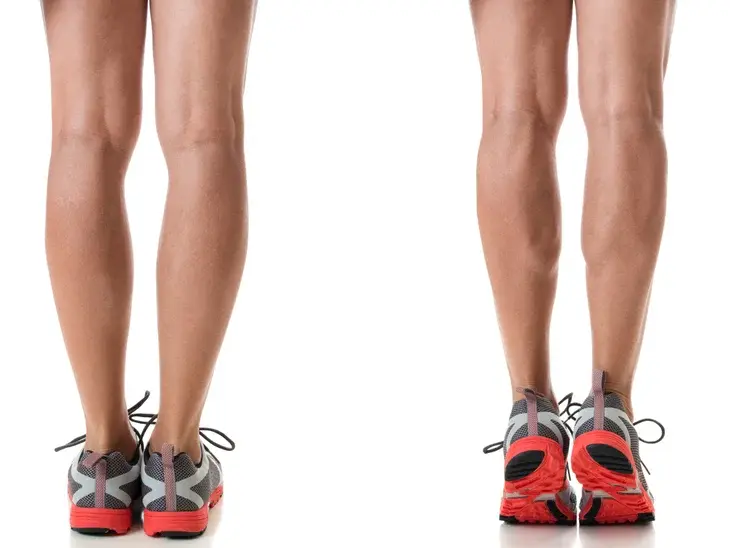
It is possible to strengthen your calves with calf raises. The gastrocnemius and soleus are toned and strengthened by using body weight. For balance, stand close to a wall or seat. To preserve your joints, place your feet hip-width apart and ensure that your knees, hips, and ankles are all in a vertical alignment. To lift the body, apply pressure to the balls of both feet. To move straight, pull on your abdominal muscles and shift your body from side to side. Exercise must be repeated 4 to 5 times a day.
Single Leg Calf Raise
For the Single Leg Calf Raise Exercise try the following steps,
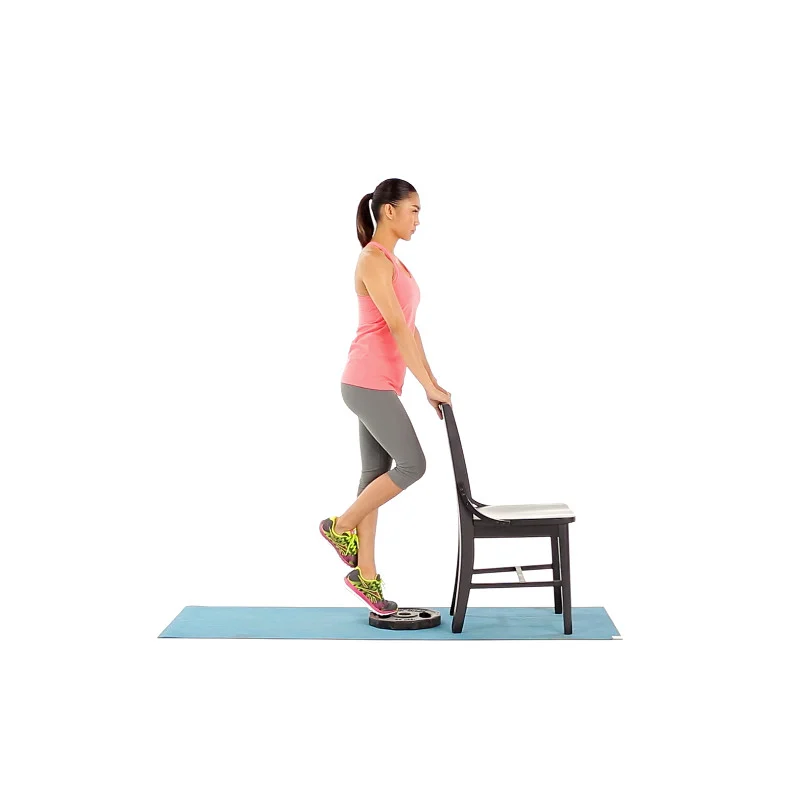
To begin, place one leg on a wall or bench for balance, then the other leg. To protect the joints, the leg’s ankle, knee, and hip are positioned vertically. To raise the body higher, press onto the ball and then your foot. Avoid moving forward or backward because the abdominal muscles are drawn in. Exercise must be repeated 4 to 5 times a day.
Raise Your Calf While Seated
For the Raise Calf While Seated Exercise try following the steps,
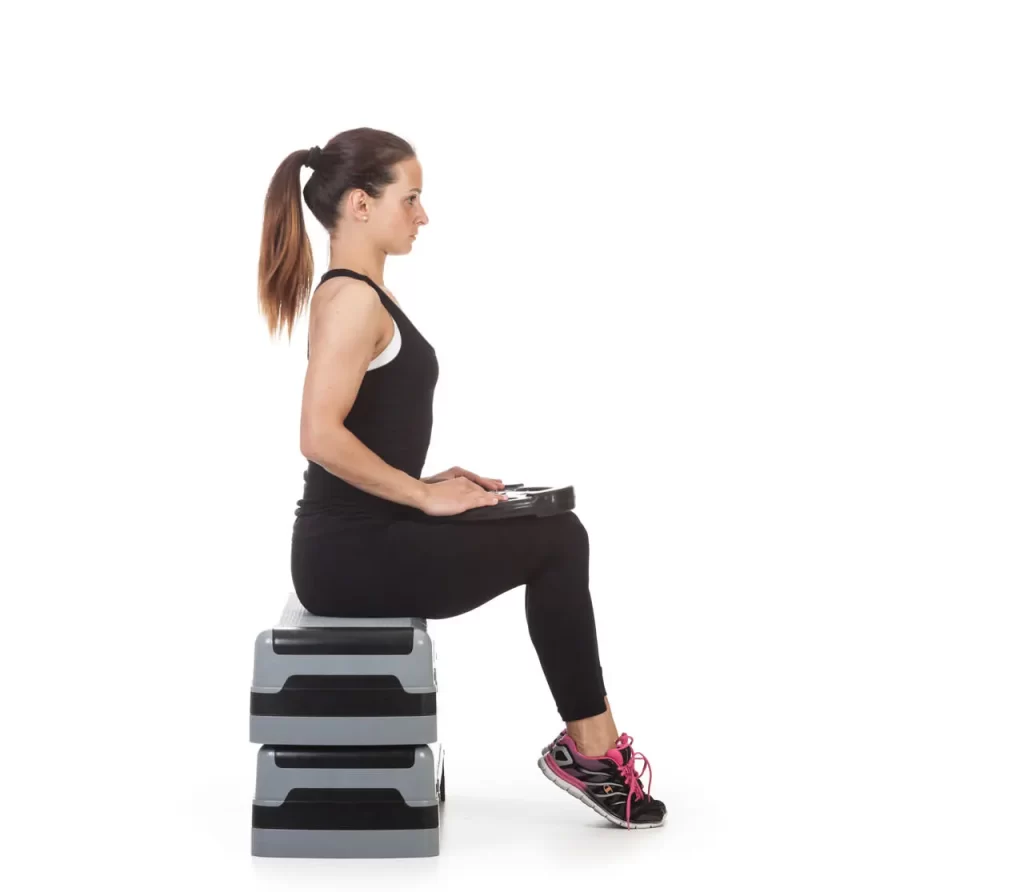
These exercises are performed on a calf exercise machine at home or in the gym. Both the gastrocnemius and soleus muscles are used during the exercise. Exercise must be repeated 4 to 5 times a day.
Sports for Building Calf
The following activities can assist your calves in becoming more toned and stronger. Swimming, hiking, walking, and running are all excellent exercises for strengthening your calves. Running sports require you to run, leap, and use your calf muscles to the limit. Examples of these activities are basketball, tennis, and soccer. It works wonders for toning. Exercise must be repeated 4 to 5 times a day.
Step up a staircase
For the Step up a Staircase exercise try following the steps,
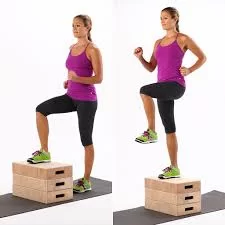
Standing in the beginning posture for this workout. Next, Put one foot on a step bench or platform and the bottom step of a staircase.
Maintain a straight posture at the level of your pelvis while standing. Subsequently, bend at the knee and gradually descend to the floor with the opposing foot. After that, gently plant your toe on the ground and stand back up to your starting position.
Ten times throughout a single session, repeat this exercise. Perform this exercise in three periods each day.
Ankle pump Exercise
For the Ankle pump Exercise try the following steps,
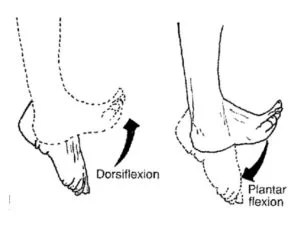
Exercise for the ankle pump involves the patient sitting or lying down with their back straight against a chair. Legs are then split slightly apart and extended. Next, raise the toes until the soles are too flat. Next, pretend to apply pressure to the Hold this position for three to five seconds after the patient feels a stretch.
Next, slowly make your way back to your toes, which are parallel to the floor. Then, do this exercise ten to fifteen times in a single session. Perform three bouts of this exercise each day. Exercise must be repeated 4 to 5 times a day.
Stretching exercises of the calf muscle
Stretching exercises of the calf muscle are as follows,
- Wall stretching of the calf
- Dog yoga with a downward face
- Heel cord extension with the knee bent
- Heel Drop stretching on one leg
- Inchworm stretching
- Front fold stretching
- Lunging Calf Stretching
- Towel Extension Stretching
Wall stretching of the calf
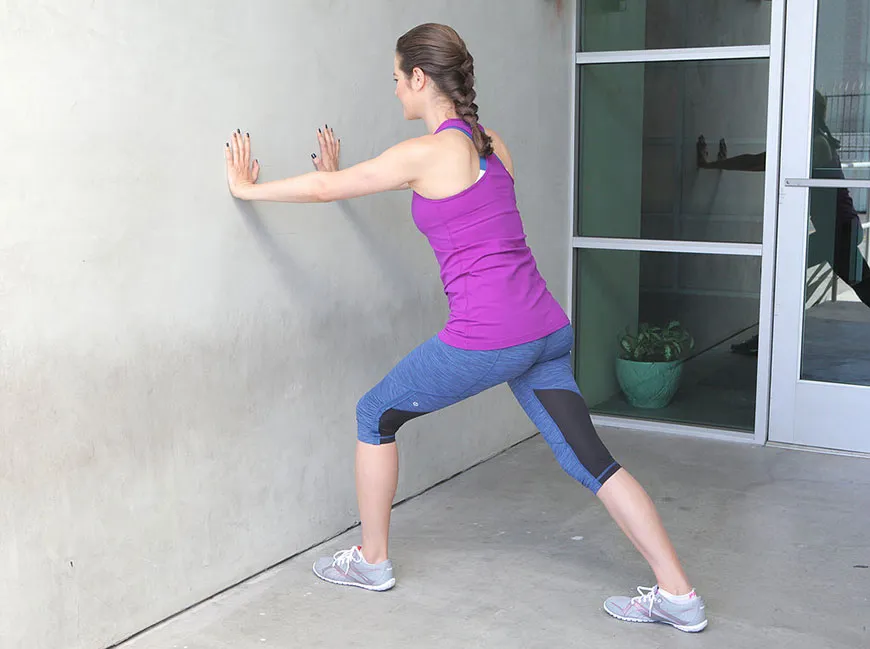
Lower leg flexibility can be increased and muscular tension can be decreased with calf stretches.
For the Wall stretching of the calf try following the steps:
Place one foot in front of the other and bend your front knee slightly while standing close to a wall or bench. Bend towards the wall while keeping the rear knee straight and the heel planted on the floor. Feel the stretch throughout the back leg’s calf. Hold this position for 20 to 30 seconds, then switch to the other leg and repeat the exercise three times.
This stretch is more advanced, Take a step. Place the ball of the foot on the step’s edge. Make sure your heel is off the step. Bring your weight through your leg and gradually lower your heel while holding onto something, such as the lower. Exercise must be repeated 4 to 5 times a day.
Dog yoga with a downward face stretch
For the Dog yoga with a downward face stretching of the calf try following the steps,
Starting position: on your hands and knees. Next, apply pressure with your hands to raise your hip joint towards the ceiling. Subsequently, lower your head such that your ears align with your upper arms and your chin rests against your chest. Next, bend at the knees to slightly tilt your pelvis forward.
As you adjust your body to any variations, make sure it feels right. Next Strike this posture for a maximum of one minute. The patient feels as though they are stretching into their rear leg in this position. For thirty seconds, this position is held. Do this stretching exercise again. Exercise must be repeated 4 to 5 times a day.
Dog Downward Using Foot Pedal Stretch
With your hands directly beneath your shoulders, begin in a high plank position. For the Dog yoga with a downward face using foot pedal stretching of the calf try following steps,
Your body should form an inverted V as you shift your weight back and press through your fingers and palms to bring your butt to the ceiling. Exercise must be repeated 4 to 5 times a day. As you push the heel of the opposing foot into the floor, stand up on the toes of one foot. Repeat the pedaling motion in reverse on the opposite side. Keep on pedaling.
Heel cord extension with the knee bent
It is necessary to use a wall for this stretch. For the Heel cord extension with the knee bent stretching of the calf try following the steps,
Step 1: Place the right leg in front of the left leg while standing.
Step 2: Point the toes slightly inward and bend the back (left) knee slightly. Grasp the wall with both hands.
Step 3: Press your hips against the wall while maintaining a flat heel position on the ground.
Step 4: Stretch again on the other side. Exercise must be repeated 4 times a day.
Heel Drop calf stretching on one leg
For the stretching of the calf by Heel Drop stretching on one leg method try following the steps,
Place the balls of your feet on the step’s edge as you stand. Lower one heel to the ground. Try not to put too much weight on the other leg as you bend it. Continue on the opposite side. You can either slowly pedal your heels back and forth or lower both of your heels towards the floor and raise and lower them to make this a dynamic stretch. Exercise must be repeated 4 times to 5 times a day.
Inchworm calf Stretch
Put your hands on the ground and stoop to your waist. With your hands flat, wrists stacked beneath your shoulders, and your core, quads, and butt engaged, walk your hands forward to form a high plank. Take a brief break in high With your hands flat, wrists stacked beneath your shoulders, and your core, quads, and butt engaged, walk your hands forward to form a high plank. Take a brief break in the high plank. Exercise must be repeated 4 to 5 times a day.
To restart, walk your hands back to your feet and stand up. This is one repetition. Your entire body is activated by this dynamic stretch, from your shoulders to your heels. When you walk your hands back to the starting position, your calves participate in the action.
Front fold stretch
For the Front fold stretching of the calf try following the steps,
Place your hands by your sides, look straight ahead, keep your shoulders back, and stand with your chest up and feet together. Breathe in, and as you release, slowly roll your mouth down to bring the crown of your head down to your chest.
As you slowly fold your chest forward towards your thighs, visualize moving each vertebra individually (your chest may not touch your thighs, depending on your flexibility). After folding forward, you can either press both hands gently against the floor as demonstrated, or you can choose to interlace your fingers around your big toes or clasp your opposite hand around your elbow. Though this stretch is mainly used to lengthen your hamstrings, it also helps to loosen up your calves. Your back should also experience a mild release. If you are unable to touch the floor, you can either put your hands on a box or yoga block or bend your knees more. Exercise must be repeated 4 to 5 times a day.
Lunging Calf Stretch
for the Lunging type stretching of the calf try following the steps
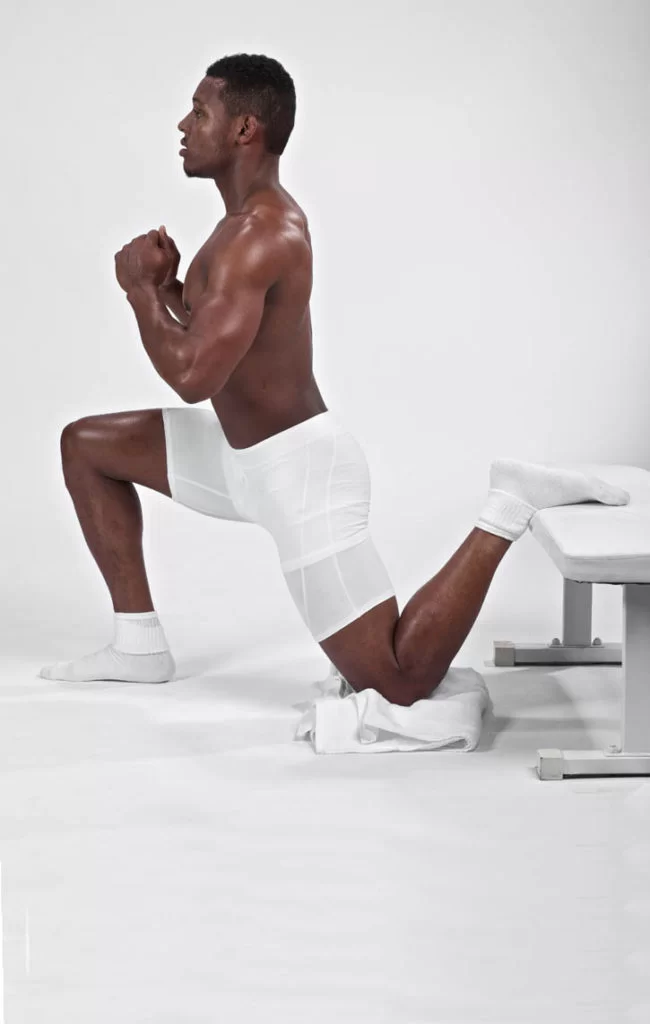
Place yourself facing a wall a few feet away. You can also just do this with your hands on your hips (as seen in the above picture) if you’re not close to a wall. With your back straight and your front leg bent, perform a mini lunge by placing your hands on the wall for support. Put some clothes or a towel to reduce friction on the backward leg.
Your back heel should be flat on the ground as you lean against the wall. The stretch will be deeper the farther apart your feet are. Continue on the opposite side. Exercise must be repeated 4 to 5 times a day.
Towel Extension Stretch
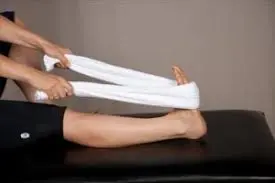
For this stretch, a hand towel is needed.
For the Towel Extension stretching of the calf try following the steps,
Step 1: Take a seat on the ground and extend both legs in front of you.
Step 2: Encircle the ball of one foot with the hand towel. Hold the towel by both ends.
Step 3: Pull the towel towards the body while maintaining erect legs, then hold the pose for 30 seconds. Next, unwind for a half-minute.
Step 4: After performing the stretch three times, switch to the other side. Exercise must be repeated 4 to 5 times a day.
Home remedies for Relieve the calf muscle spasm
- The source of calf discomfort determines the course of treatment, however, most cases can be managed at home. Although mild-to-moderate damage and overuse are the main causes of calf muscle pain, the following are some suggestions:
- Anti-inflammatory medications can be used by the patient to reduce swelling and ease pain coming from calf muscle spasms.
- Start strengthening and extending your calf muscles after 48 hours by performing exercises like heel raises and calf stretches. nevertheless, Don’t come back to athletic or regular activity till you have fully recovered.
Prevention of the calf muscle spasm
- Stretching always helps to strengthen and mend the calf muscle before and after an exercise session. When beginning something new, build it up gradually and avoid overdoing it. To prevent calf muscle cramps, sip on lots of water.
- Some people, primarily pregnant women, have reported that taking magnesium supplements with water helps reduce cramps. If a patient has diabetes, the supplements help manage blood sugar levels, which prevents diabetic neuropathy.
- Over-the-counter (OTC) medication: Common pain medicines like ibuprofen and naproxen can also ease calf pain. Stretching: Gentle stretches can help reduce calf pain. Drugs give pain relief to muscles that feel pain after severe spasms.
- To extend the calf muscles, apply this stretching once the symptoms have somewhat subsided. Strive for increased general fitness.
- Regularly stretch your muscles. Particularly for those who are most prone to muscle spasms, do this. Sip a lot of water in a day, approximately 5000 ml a day. Exercise must be repeated 4 to 5 times a day to benefit from exercises in case of calf muscle spasm.
- Steer clear of intense heat when exercising. Put on shoes that fit you well. Maintain a weight that is appropriate for you.
- Steer clear of drugs that could result in muscle spasms as an adverse effect. If you sleep on your back, use pillows to keep your toes pointed upward to avoid leg cramps. Place your feet over the edge of the bed if you sleep on your chest.
- Keep the blankets and sheets loose around your legs while you sleep. And doing stretches regularly and before and after exercises as warm-up and cool-down.
Prognosis of the calf muscle spasm
As people age, their muscle spasms may get worse and occur more frequently. Exercises such as those mentioned above are examples of preventive techniques that can lower your overall risk of muscle spasms.
Summary
- Calf Muscle spasms, also referred to as calf muscle cramps, happen when your muscles contract uncontrollably and without conscious thought, leaving them unable to relax. Calf Spasms in the muscles are common and normal.
- The intensity of muscle spasms can vary from slight twitches to excruciating pain. The muscle may seem noticeably distorted or feel harder to the touch than usual. It might exhibit over twitching. Usually lasting anywhere from a few seconds to a full hour or more, spasms can recur several times before ending.
FAQs
After the exercise, continue consuming water or other caffeine-free or alcohol-free beverages can help to avoid calf muscle spasms.
Though the precise mechanism is unknown, nerve dysfunction and muscle fatigue are more likely to be the cause of the cramps at night rather than electrolyte imbalance or other anomalies.
A cramp may come on for a few seconds or ten minutes. In some cases,
it lasts 15 minutes.
Steer clear of processed foods, alcohol, fatty meats, added sugar, and salt, which cause calf muscle spasms.
Many times, calf muscle spasms go away in a matter of days or weeks.
References
- Professional, C. C. M. (n.d.-l). Muscle spasms (Muscle cramps). Cleveland Clinic. https://my.clevelandclinic.org/health/diseases/muscle-spasms-muscle-cramps#management-and-treatment
- Valand, B. (2023, June 22). the Calf muscles: anatomy, origin, insertion, function, exercises. Samarpan Physiotherapy Clinic. https://samarpanphysioclinic.com/calf-muscles-anatomy-function-exercise/#Strengthening_exercise_of_calf_muscles
- Ladva, V. (2022a, March 6). Calf pain: Cause, Symptoms, Diagnosis, Treatment, Exercise – Samarpan. Samarpan Physiotherapy Clinic. https://samarpanphysioclinic.com/calf-pain/#When_does_the_patient_go_to_the_doctor
- Dhameliya, N. (2023, June 2). Muscle spasm: cause, physiotherapy treatment, exercise. Samarpan Physiotherapy Clinic. https://samarpanphysioclinic.com/muscle-spasm/#What_is_a_Muscle_Spasm
- Muscle cramp – Diagnosis and treatment – Mayo Clinic. (2023, March 7). https://www.mayoclinic.org/diseases-conditions/muscle-cramp/diagnosis-treatment/drc-20350825
M, N. K. (2020, March 6). Leg Pain: symptoms, causes, treatment, medicine, prevention, diagnosis. myUpchar. https://www.google.com/amp/s/www.myupchar.com/en/disease/leg-pain.amp - Cooper, G., MD. (n.d.). The leg pain and numbness: What might these
- symptoms mean? Spine-health. https://www.spine health.com/conditions/leg-pain/leg-pain-and-numbness-what-might-these-symptoms-mean
- Tegna, W. (2019, February 26). 9 Stretches and Exercises for the Leg Pain Relief | Spine Works Institute. Spine Works Institute. https://www.dfwback.com/9-stretches-and-exercises-for-leg-pain-relief/
- PharmD, J. C. (2023, August 31). Calf stretches and how to do them. https://www.medicalnewstoday.com/articles/calf-stretches#summary
- Leg pain. (2023, April 25). Mayo Clinic. https://www.mayoclinic.org/symptoms/leg-pain/basics/when-to-see-doctor/sym-20050784
- Minal (2020, March 6). Leg Pain: symptoms, causes, treatment, medicine, prevention, diagnosis. myUpchar. https://www.google.com/amp/s/www.myupchar.com/en/disease/leg-pain.amp
- NHS inform. (2023, October 23). Leg cramps | NHS inform. NHS Inform. https://www.nhsinform.scot/illnesses-and-conditions/muscle-bone-and-joints/conditions/leg-cramps/

